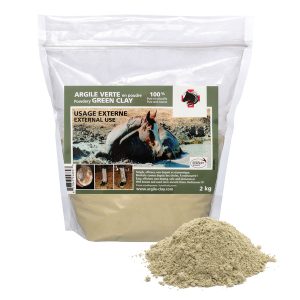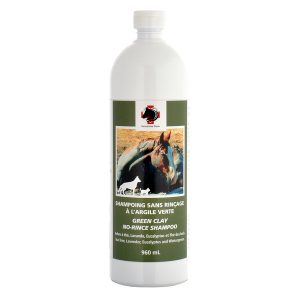Painful and annoying
It's the start of the summer season! For some, it also marks the return of the recurring problem of thinning manes and tail attachments that look more like a frizzy bouquet. DERMATITIS, or SUMMER DERMATITIS. Horses sometimes scratch themselves until they bleed, and their owners seek solutions to relieve the pain.
Caused by an allergic reaction to insect bites (culicoides, midges, small black flies). Call it what you will, the affected horses often end up self-mutilating because it itches so much.
The incidence, causes, and presence of sweet itch are very difficult to establish. Depending on the geographical location, 5 to 60% of the equine herd can be affected. In British Columbia, a survey was conducted. Of a population of 113,000 horses, 26% were affected by this problem in 2014.
However, it seems that this condition is becoming more and more of a common summer nuisance (even worse than mosquito bites) among our equine friends.
Generally speaking, black horses, overweight horses, and certain breeds are more likely to have this problem. However, any horse, pony, or miniature horse can be affected by this painful condition.
Personally, this also makes me think of the category of horses that develop EMS (equine diabetes). Are they often the same ones that suffer from summer dermatitis? Sadly, I often think so. A holistic approach is therefore welcome and desirable.
According to my various readings, my training, my experience and my approach to holistic and natural care, PREVENTION which should begin in February-March is often as always a good method and start of improvement.
If the horse is already attacked, in crisis or mutilated, applying a poultice of green clay will greatly relieve it. Thanks to its antiseptic power it will help with healing and the poultice will also protect against possible future bites.
Before the poultice, you can also lightly apply a little clay leave-in shampoo.
This product has already proven effective on all itchy skin problems in horses, cattle, and dogs. Another product in our range that is also very effective is the Green Clay Soap (vegan, with essential oils). Rub the wounds and targeted areas with the wet soap, rinse quickly, let it dry, and apply the clay poultice.
However, depending on the severity of the case, different approaches will be taken. Sometimes, relief and medication prescribed by your veterinarian will be necessary.
But prevention and a nutritional alternative are often a great help in solving this problem.
To prevent bites, applying a green clay poultice, especially to strategic areas, is probably the best natural, long-lasting, and easiest-to-apply protection. Moreover, the clay not only soothes but also protects sensitive areas. Just think of African animals and you'll understand that we're not inventing much; it's just natural.
Prevention alternatives before the season
For your pet's well-being and health, you could add freshly ground or extruded flaxseed to your diet, as well as a dose of dried nettle. Nettle is a wonderful plant, one of whose properties is its antihistamine power.
By regularly cleansing and regenerating your horse's body with the 3-week seasonal internal clay cure, adding flaxseed very regularly throughout the year and nettle from February for a few weeks, the chances of getting through it better should increase a little. The only way to know is to try it.
However, I would like to point out that nettle should not be given year-round or throughout the season, as it is also a diuretic plant. As I often mention, natural does not mean harmless and safe. Choose and seek advice from a true professional for your natural products as well.
Omega-3 fatty acids are among the promising nutritional alternatives because they have long been recognized—according to some studies listed in scientific literature dating back to 1966—as effective for maintaining healthy skin and coat. Freshly ground or extruded flaxseed has been a good, readily available source of Omega-3 for many years. It also appears to have anti-inflammatory effects.
This hypothesis was tested in a study at the Equine Research Centre (University of Guelph) on horses suffering from summer dermatitis. Ground flaxseed meal (50 g per day) was added to their diet for 42 days; on days 0, 21, and 42, they received a subcutaneous injection of Culicoides extract, saline (negative control), and histamine (positive control). Flaxseed significantly inhibited the allergic skin reaction to the Culicoides injection.
Also, it is obvious that we will avoid as much as possible having our pastures near marshy areas or a pond, as well as near damp soil and vegetation. These are breeding grounds for flies, mosquitoes and midges.
Of course, the most natural mosquito repellent products possible, such as fly rugs and masks, can provide excellent protection to provide the most relief for affected horses. However, they often don't last very long.
As in all situations, everyone does their best, according to their knowledge, beliefs and budget, but always with the desire to do well for the well-being of their horse(s).
Kind regards to you
- Sources et Biographies :
- Article écrit par : Dr. Wendy Pearson, PhD (Dr. of Veterinary Toxicology)
- Article initial du Canadian Horse Journal
L
As usual, if you have any doubts or questions, your veterinarian is your contact person.








